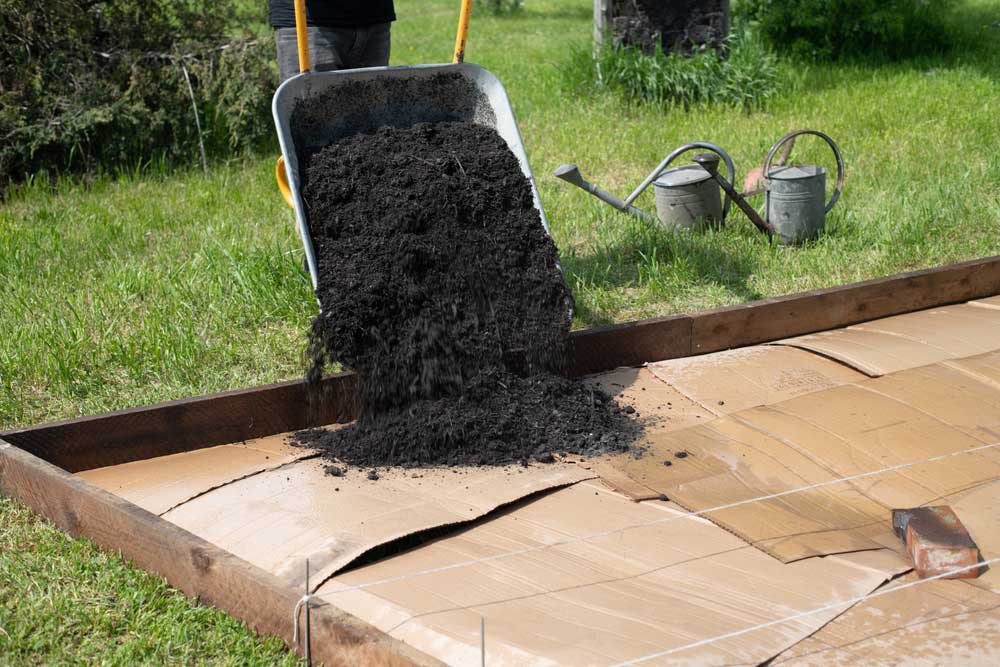No-dig gardening is a method of cultivating plants without disturbing the soil through traditional means such as tilling or turning.
The idea is to create an environment where natural processes can maintain soil structure and health, mimicking the way soil is formed in nature.
By avoiding soil disruption, no-dig gardening aims to protect the intricate web of microorganisms that play a crucial role in nutrient cycling and plant health.
This approach to gardening involves layering materials such as compost, manure, and mulches on top of the soil where your plants will grow.
These materials slowly decompose, adding nutrients to the soil and improving its structure.
This method encourages earthworms and beneficial microbes to thrive, which in turn helps plant roots to receive the nutrition they need.
Not only is no-dig gardening seen as an easier approach since it reduces the physical labor of garden bed preparation, but it is also considered more sustainable and gentle on the Earth’s ecosystems.
Basics of No-Dig Gardening
No-dig gardening is a method that promotes the health of your soil by avoiding disruption. It involves layering materials to create a fertile growing environment for plants.
Definition and Principles
No-dig gardening, as the name suggests, is a practice where you do not till or turn the soil. Instead, you layer organic materials like compost, manure, straw, leaves, and cardboard directly on top of the ground. These layers break down over time, enriching the soil beneath and fostering a vibrant ecosystem. The key principles are to:
- Minimize soil disturbance: Protecting soil structure and the life within.
- Maximize soil cover: Using organic layers to shield soil from the elements.
- Foster biodiversity: Encouraging a range of organisms that contribute to soil health.
This approach mimics natural processes found in undisturbed ecosystems, such as forests.
Benefits of No-Dig Gardening
No-Dig Gardening offers multiple benefits:
- Improved Soil Structure: Soil organisms like earthworms thrive and naturally aerate the soil, which would be hampered by tilling.
- Water Retention: The layers help to retain moisture, reducing the need to water frequently.
- Weed Suppression: Weeds have a harder time penetrating through the thick layers, making your job easier.
- Healthier Plants: Plants grown in a no-dig garden often have better access to water and nutrients, which results in healthier growth.
- Reduced Erosion: Without tilling, the soil is less likely to be washed or blown away.
By following no-dig methods, you can create a productive garden that’s healthier for plants and more sustainable in the long run.
Implementing the No-Dig Method

To successfully establish a no-dig garden, you’ll need to gather specific materials and follow a structured process. Regular maintenance ensures your garden thrives without the need for digging or tilling.
Materials Needed
- Cardboard or newspaper: These serve as a base layer to suppress weeds.
- Compost: Vital for providing nutrients to the soil.
- Mulch: Organic materials like straw or wood chips to cover the soil.
- Fertilizer: Natural options like worm castings or fish emulsion.
Step-by-Step Process
- Select a Location: Choose a spot with adequate sunlight and access to water.
- Lay the Foundation: Cover the ground with cardboard or newspaper layers. This will smother existing weeds and grasses.
- Add Compost: Apply a thick layer of compost, around 4-6 inches, over the cardboard.
- Mulch Application: Spread a generous layer of mulch on top of the compost to retain moisture and deter weeds.
- Planting: Make small openings in the mulch to sow seeds or insert seedlings.
- Watering: Ensure the area is well-watered to help establish the layers and support plant growth.
Maintenance Tips
- Watering: Keep the garden hydrated, especially during the initial phase and in dry spells.
- Replenishing Layers: Annually add more compost and mulch to sustain fertility and suppress weeds.
- Monitoring: Regularly check for pests and diseases, and manage them using organic methods.



